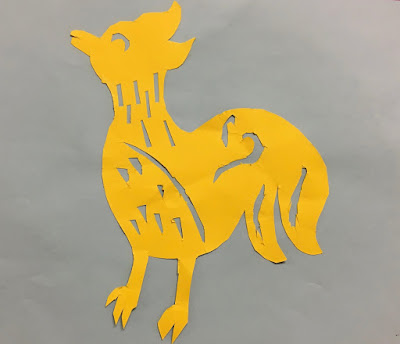Fourth
graders researched traditional Chinese New Year paper cuttings. They learned about the Chinese Zodiac,
where each year in a cycle of twelve years is assigned a symbolic animal. This
animal is believed to represent characteristics of the people born in that
year. This year is the year of the
rooster.
They
admired the intricate shapes and textures of the traditional paper cuts. To start the process, I projected a picture of a rooster on the board. We identified rooster characteristics, such as the different feather textures, the jutting chest, the comb, and the long neck. Then,
they drew and cut two of their own roosters. One rooster is the traditional red
color, which means good luck and happiness in Chinese tradition. The other
rooster is in their own personal choice of non-traditional colors.
















































